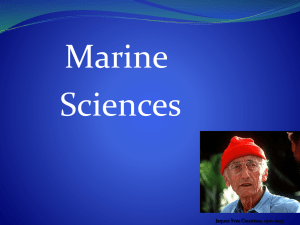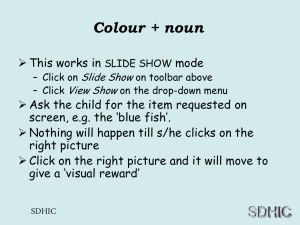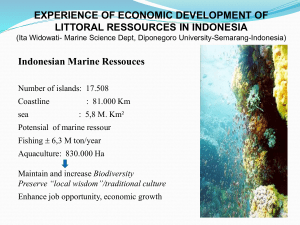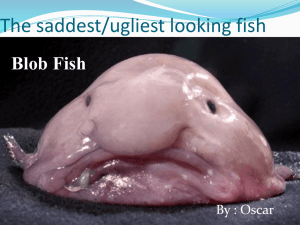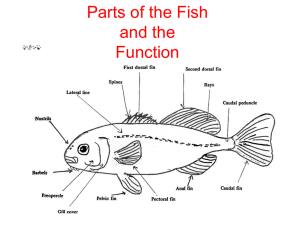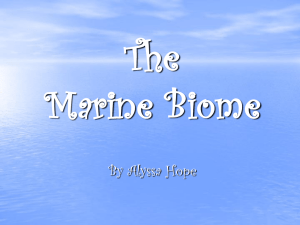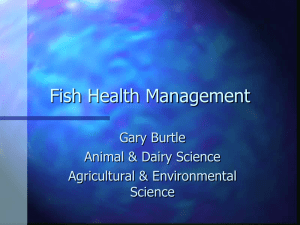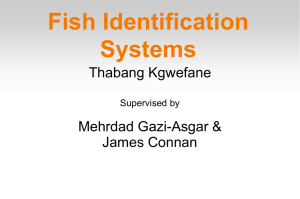Course Artifact
advertisement
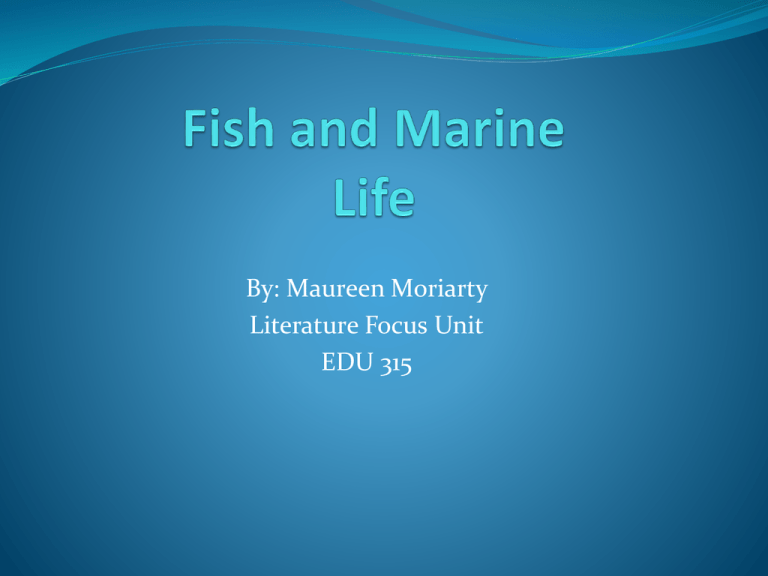
By: Maureen Moriarty Literature Focus Unit EDU 315 Literature Selection One Fish, Two Fish, Red Fish, Blue Fish By: Dr. Seuss Rainbow Fish to the Rescue! By: Marcus Pifster Ocean Fish School By: Bob Reese The Ocean Alphabet Book By: Jerry Pallota Island of the Blue Dolphins By: Scott O’Dell Theme Study Students will take part in a thematic unit on fish and marine life. This unit will integrate reading and writing with social studies, science, mathematics, art, music, and physical education. Students will develop an understanding of the marine life and fish, different types of sea life, and different areas around the world. Language Arts: Reading Activities Students will read various fiction and non-fiction books and poetry about fish and marine life through silent reading, partner reading, guided reading, reading aloud, and reader’s theatre. Students will share their papers on their life as a fish Students will share poems they wrote on marine life Teacher will read aloud from Island of the Blue Dolphins by Scott O’Dell Language Arts: Writing Activities Students will write a one to two page paper about life as a fish. They will include where they live, what they eat and etc. Students will write a concrete poem about marine life or fish Students will list and discuss good and bad things about the marine life environment Students will write personal reflections about their interactions with fish and marine life Language Arts: Speaking Activities Students will discuss advantages and disadvantages about the marine life environment. Students will trade off reading out of Island of the Blue Dolphins Students will share the stories that they wrote with other peers in front of the class Language Arts: Listening Activities Students will listen to the different types of fish and marine life presented by the teacher Students will listen to the other students in their class’ stories. Students will listen while teacher gives out other information on marine life and fish Students will listen to readings from Island of the Blue Dolphins Students will listen to different types of poetry Students will listen to guest speaker: marine biologist Language Arts: Viewing Activities Students will view photographs I show them from my home town where there are tide pools Students will view a power point with pictures, video clips, and list the several different types of fish and marine life and where they live Students will view videos and magazines on National Geographic portions for fish and marine life Language Arts: Visually Representing Activities At the end of the unit teacher will show the movie Finding Nemo to the class and eat popcorn. Students will present their poems in an artistic way Students will create a fish bowl mural in their room of the rainbow fish they make. Science Activities Students will take a trip down to the river or a pond near by to test the ammonia, pH, D.O., and Nitrate of the water with test kits. Students will learn different types and kinds of fish and research them on the internet Students will understand marine life areas such as tide pools, estuary's, etc. Students will locate the different marine life environments on the globe around the world Students will learn the food chain for fish and other marine life Students will listen to a marine biologist who will come into the classroom and discuss their job and about marine life Mathematics Activities Students will survey who has been or seen different marine life outside of the state. Students will mark down how many different states each classmate has been to and discuss with the class at the end Students will measure the water from the pond or river for the test kit Students will count the different marine life animals or amphibians and list them Discuss the important math has on science and explain the reasoning for math in scientific jobs, etc. Social Studies Activities Students will locate on the map the different areas of the world that have a marine life environment or habitat Have students list and locate all of the major oceans on the planet Students will make travel brochures or vacation brochures on places with unique fish or marine life (Galapagos Islands, Monterey Bay Aquarium, etc) Music and Art Activities Students will listen to different noises and sounds made by marine life (technology oriented, power point, you tube video clips) Students will create a rainbow fish, decorate it, and paste it on top of a large class watercolor mural in the classroom which will be the ocean Students will make their own rain sticks and it will represent the sound of the water one the rocks of the tide pools. Students will use their rain sticks during music time Students will make a frog and tell the name, where they live, what they eat and hang it on the ceiling above their desk Physical Education Activities Students will take a field trip to a pool and have a swimming party Mermaid vs. Merman relay, students will hop in a sack like a mermaid with no legs around the cone and back with split ups groups. Have a jellyfish balloon toss in the gym or playground. Play a “fish toss” game with plastic fish Play Sharks and Menno’s Technology http://kids.nationalgeographic.com/kids/ http://marinebio.org/ Show audio clips via http://youtube.com on exciting marine life clips Show Finding Nemo and other audio facts movies about marine life Show digital photography of my pictures from back home as examples http://classroomclipart.com/cgibin/kids/imageFolio.cgi?direct=Animals/Marine_Life National Geographic’s Language Arts Strategies Activating background knowledge: students will share what they already know about marine life and fish in beginning discussion Brainstorming: students will think of advantages and disadvantages of living near a marine life environment Discussion: students will get the change several times to discuss with each other the different types of marine life , what they know and don’t know Connecting: students will connect this unit to their lives as they write stories and poetry about it Visualizing: students expand their creativity by doing the art projects and viewing the pictures and video clips to open up there mind and teach them about the different parts of the world Language Arts Skills List: students will decorate with color the different vocabulary associated with this unit in the beginning Language: Students will apply different skills in each of the subjects areas Charting: students will learn how to track data and record it Grouping Patterns Large group: students will engage with their classmates on fieldtrips and whole class activities Small groups: students will learn to work with partners or a couple of other students to test water, participate in relay, etc. Individual: students will write papers and poems Calendar (for one week) Monday Tuesday Wednesda y Thursday Friday Language Arts *Intro conversation *Discussion on the advantages and disadvantage s about marine life *Students write a short reflection on their experiences with marine life and fish *Finish personal reflections *Go over poetry *Students write a concrete poem on fish or marine life *View power point of pictures from my home *Read stories and show magazines and clips from National Geographic *Write a story about for their “rainbow fish” and research and write where the fish is from, what it eats, what he/she likes to do, etc *Watch Finding Nemo and discuss different marine life and fish shown Art/Music *Listen to different noises and sounds made by marine life *Complete rain sticks *With rain sticks the class will sing *Begin making rainbow fish *Finish rainbow fish *Show and tell in front of class your rainbow fish and his or her Assessments Poems and stories will be handed in for grade Science results and data sheets will be turned in after testing water Portfolio artwork will be handed in for teacher to put up in the classroom Walking around and observing during group work and activity will help me determine if the students are conveying the message or not


